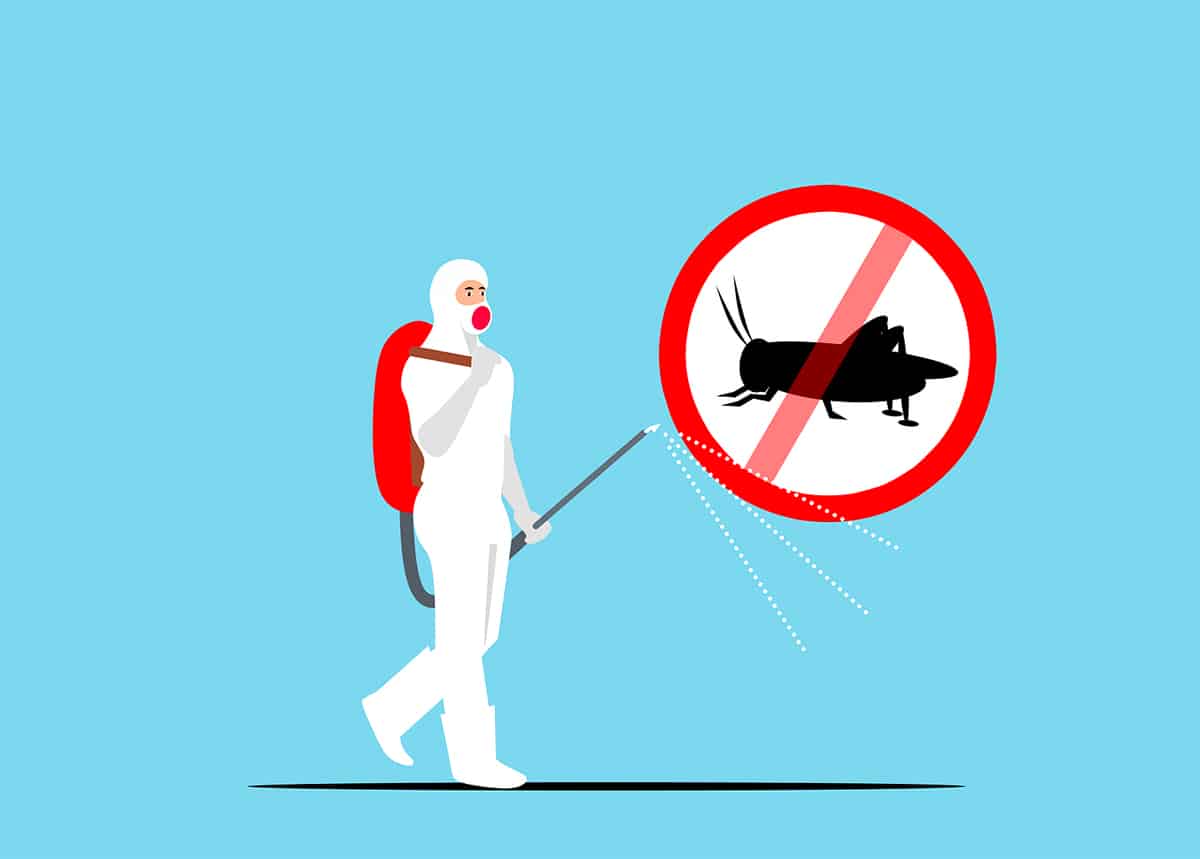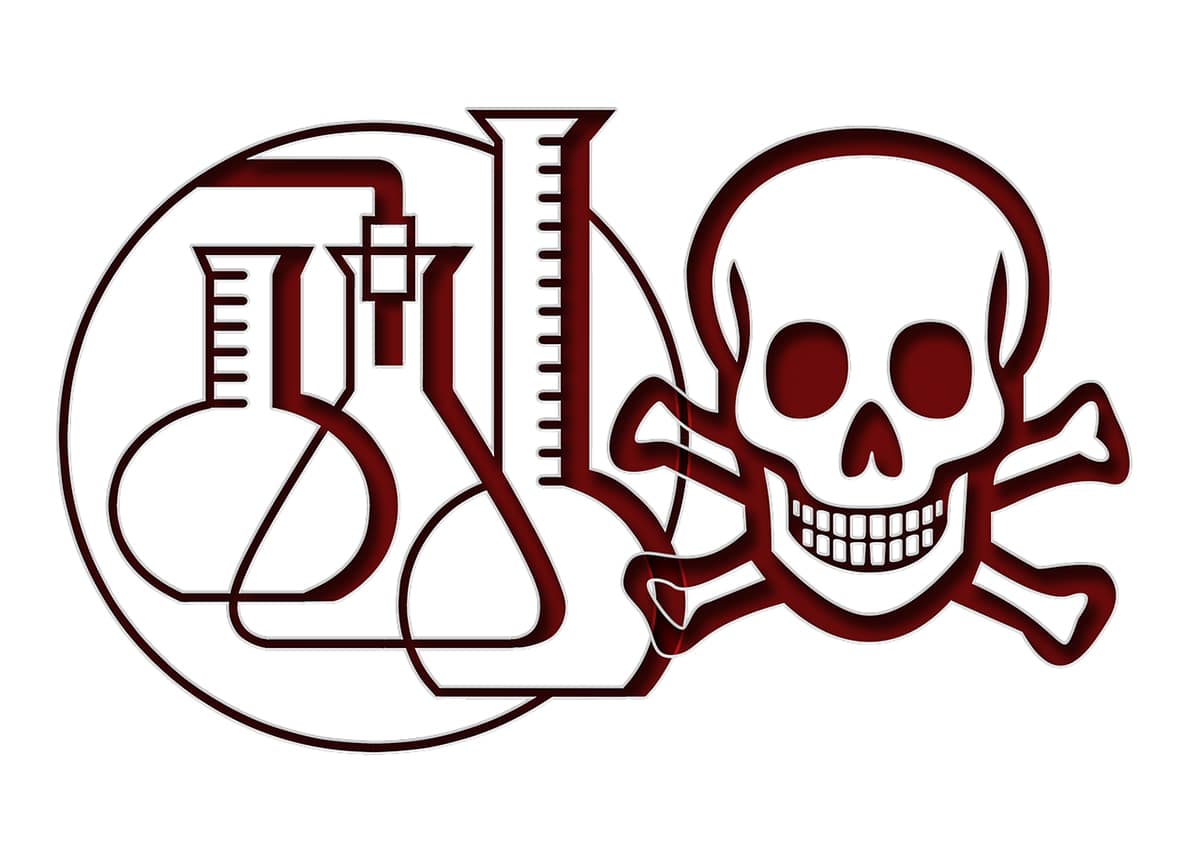
If you like gardening or you dedicate yourself to agriculture, surely you have seen in stores or on the internet products that contain cypermethrin. But do you know what it is? This synthetic insecticide is widely used to combat various insects, whether they are affecting vegetables, livestock or our pets.
In this article we will explain what is cypermethrin, which insects it kills, how it is used to fumigate and how long it can last on plants. If you are thinking of using this insecticide, I recommend that you continue reading so that you know the effects it can have and the importance of respecting the indicated periods of time.
What is cypermethrin?

Before explaining how to use cypermethrin to fumigate, we will first discuss what this product is. It is a synthetic insecticide belonging to the group of pyrethroids. These are basically molecules with an insecticidal effect usually applied to domestic animals, plants, crops and even humans, being properly treated and diluted.
However, when handling this product we must be very careful. If you come into contact with it, it can cause mild skin irritation and moderate eye irritation, which can be extremely annoying. Generally, people who work with synthetic pyrethroids, including cypermethrin, they may experience a tingling or burning sensation in the face if they do not wear face protection. These symptoms usually appear about thirty minutes after being exposed.
What kills cypermethrin?
Cypermethrin has a very broad spectrum of action. Affects many different pests, whether from crops or animals. It acts through direct contact and ingestion by insects. This insecticide is very effective against the following pests:
- Flying insects: Bed bugs, gnats, flies and mosquitoes (among others).
- Crawling insects: Spiders, centipedes, ticks, cockroaches, crickets, ants, lice, fleas and aphids (among others).
Regarding the action of cypermethrin, it generates a knockdown and turning, repellency and residual effect on various crops. However, it should be noted that this product can produce chronic effects in humans, without becoming fatal. These include permanent dizziness, migraine, vomiting and vertigo.
If the case of ingestion occurs, it is very important that we do not induce vomiting. The best we can do is rinse the mouth well with plenty of clean water. Then we must go to the emergency room to see a doctor. Nor should you ingest any fatty substance or milk. Regarding the human toxicity of cypermethrin, the acceptable daily intake is 0,05 milligrams for every kilo of weight.
How is cypermethrin used for fumigation?

When using this synthetic insecticide, it is important to read the instructions on the container carefully. It is usually diluted with water, but the amounts depend on the percentage of cypermethrin and the objective. It is not the same to use this product in a dog as in potatoes, for example. When we buy this product, all the indications must be on the bottle or in an instruction booklet.
It is important to be very careful when using this product in grazing areas. From its application to the next grazing must be at least seven days. It should be noted that cypermethrin is toxic to some plants, so it should never be applied to their crops. The vegetables that do not tolerate this insecticide are the following: Turnip, radish, rutabaga and fennel.
Application according to crop
Next we will list some of the crops that do have authorization to be treated with cypermethrin and we will put what it acts against in each case and the number of applications:
- Artichoke: To control caterpillars and aphids. Maximum two applications leaving at least 10 days between each one. See file.
- Alfalfa: To control caterpillars, aphids, cuca and green worms. Maximum two applications leaving at least 10 days between each one. See file.
- Broccoli: To control aphids, fleas and caterpillars. Maximum two applications leaving at least 10 days between each one. See file.
- Pumpkin: To control caterpillars and aphids. Maximum two applications leaving at least 10 days between each one. See file.
- Barley: To control aphids. Only one application per campaign should be made. See file.
- Cauliflower: To control aphids, fleas and caterpillars. Maximum two applications leaving at least 10 days between each one. See file.
- Spelt: To control aphids. Only one application per campaign should be made. See file.
- Green beans: To control caterpillars and aphids. Maximum two applications leaving at least 10 days between each one. See file.
- Corn: To control caterpillars, diabrotica and aphids. Maximum two applications leaving at least 10 days between each one. See file.
- Cantaloupe: To control caterpillars and aphids. Maximum two applications leaving at least 10 days between each one. See file.
- Potatoes: To control aphids and beetles. Maximum two applications leaving at least 10 days between each one. See file.
- Tomato: To control caterpillars, whitefly and aphids. Maximum two applications leaving at least 10 days between each one. See file.
- Carrots: To control thrips, whitefly, beetles, caterpillars and aphids. Maximum two applications leaving at least 10 days between each one. See file.
How long does cypermethrin last in plants?

If we have used cypermethrin to fumigate our crops, we must wait a minimum of days to be able to harvest them. The periods that we must respect depend on the vegetable that we have fumigated, let's see what they are:
- Cotton seeds: 14 days
- Soya podless seeds: 14 days
- Alfalfa forage: 14 days
- Natural pastures: 14 days
- Lentils: 14 days
- Pea without pod: 14 days
- Bean: 14 days
- Flax seed: 20 days
- Tomatoes: 21 days
- Onion: 21 days
- Fruits with seeds: 21 days
- Stone fruit trees: 25 days
- Forage and/or sorghum grain: 30 days
- Sweet corn grain: 30 days
- Wheat grain: 30 days
- Sunflower seed: 30 days
Remember that it is very important respect these periods. Cypermethrin is toxic to us and to animals, so we could cause serious poisoning if we harvest food or let animals graze too soon. In addition, it is very important to protect ourselves well whenever we are going to use this insecticide.